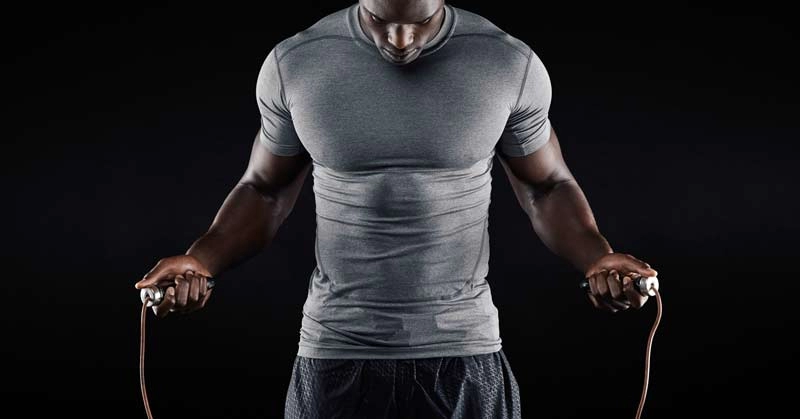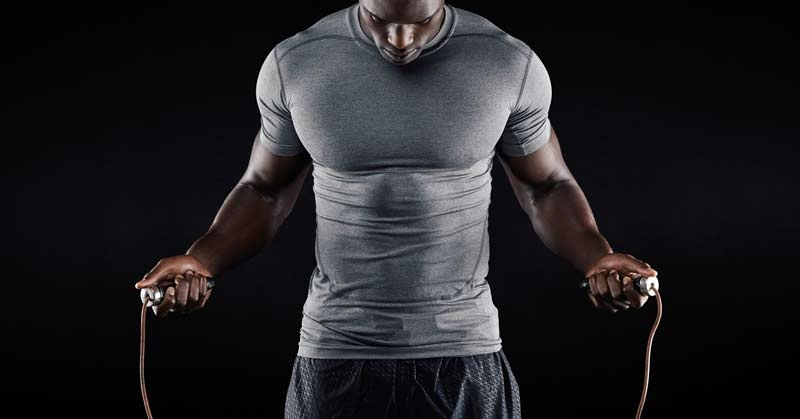Are you wondering, “Is skipping rope plyometrics?” You’re not alone. Skipping rope has exploded in popularity—not just as a fun activity but as a serious training tool for athletes, fitness enthusiasts, and trainers alike. But where does it really fit in the world of plyometric exercises?
In this post, we’ll break down what plyometric training actually involves and explore whether skipping rope exercises meet those criteria. You’ll get clear, expert-backed insights on how skipping rope can deliver powerful plyometric benefits—plus practical tips on how to integrate it into your workout routine for maximum impact.
Ready to jump in and discover how skipping rope stacks up as a plyometric powerhouse? Let’s get started!
What is Plyometric Training
Plyometric training is a form of exercise focused on explosive movements designed to increase power, speed, and coordination. At its core, plyometrics use the stretch-shortening cycle, which means muscles are rapidly stretched (eccentric phase) and then immediately contracted (concentric phase) to generate maximum force in the shortest time. This cycle helps train your muscles to be more reactive and efficient, improving athletic performance and functional movement.
Key Characteristics of Plyometric Exercises
- Explosive and high-intensity: Movements like jumps or bounds aim to produce maximum force quickly.
- Rapid stretch-shortening cycle: The muscle group is pre-stretched, then activated immediately to boost power.
- Dynamic and reactive: Exercises often involve ground contact times under 250 milliseconds to challenge the body’s ability to generate fast, forceful contractions.
Examples of Common Plyometric Exercises
- Jump squats: Combining a squat with a powerful vertical jump to train leg power.
- Box jumps: Jumping onto and off a sturdy platform to improve explosiveness and balance.
- Bounding: Long, exaggerated running strides to enhance stride length and power.
- Lateral jumps: Side-to-side hops that boost agility and coordination.
These exercises are staples in many workout routines, from athletic training to general fitness programs targeting explosiveness.
Physiological Benefits of Plyometric Training
Plyometrics not only build strength but also refine neuromuscular function:
- Power development: They help muscles produce more force rapidly, essential for sports and daily activities.
- Speed enhancement: By training fast-twitch muscle fibers, plyometrics improve sprinting and reaction times.
- Coordination and balance: Repeated explosive moves enhance motor control and body awareness.
- Increased muscle elasticity: Plyometric training boosts the stretch-shortening cycle efficiency helping muscles rebound better with less energy loss.
When done properly, plyometric training offers a well-rounded way to boost athleticism and functional fitness, making it a valuable addition to many workout plans.
What is Skipping Rope Plyometric Training

Definition and History of Skipping Rope
Skipping rope, commonly known as jump rope, is a simple yet effective fitness activity where a rope is swung under the feet and over the head repeatedly while jumping. Its roots trace back to ancient civilizations, but it gained popularity worldwide as both a children’s game and a serious athletic training tool. Today, skipping rope is embraced in many workout routines, especially for cardiovascular conditioning and coordination.
Basic Skipping Rope Exercises and Variations
Skipping rope workouts vary from beginner-friendly to highly advanced. Basic exercises include the single bounce (one jump per rotation), alternate foot step (like jogging in place), and high knees. More complex variations involve:
- Double unders (two rope passes per jump)
- Crisscross (crossing arms mid-jump)
- Side swings and backward jumps
Each move targets different muscle groups and skill levels, offering a versatile workout for all.
Physical Demands and Movement Mechanics Involved
Skipping rope demands rhythmic, continuous jumping, engaging the calves, quads, hamstrings, and core muscles for balance and control. The movement hinges on a fast, repetitive stretch-shortening cycle — muscles quickly stretch then contract to produce force, much like plyometrics.
This pattern improves:
- Muscle elasticity
- Joint stabilization
- Enhanced neuromuscular coordination
It also stresses aerobic capacity due to the sustained tempo, making it a powerful cardio and power training tool. The upper body coordinates rope rotation, while the lower body delivers explosive yet controlled jumps — a seamless interplay driving effective skipping rope workouts.
Skipping rope’s mechanics make it more than just a cardio tool; it taps into power, agility, and quick force production, key aspects in athletic training.
Is Skipping Rope Plyometrics Explosive Stretch Shortening Cycle and Force Application
To understand if skipping rope is plyometric, we need to compare the mechanics of skipping with the core principles of plyometric training. Plyometrics focus on explosive movements that use the stretch-shortening cycle (SSC)—a quick stretch of the muscles followed by a rapid contraction to generate power. Common examples include jump squats and box jumps, where the body must produce fast, forceful muscle actions.
When skipping rope, each jump involves repeated rapid loading and unloading of the calf muscles and lower legs, using the SSC. As your feet land, your muscles stretch slightly to absorb impact, and then immediately contract to propel you into the next jump. This quick cycle of stretching and shortening aligns directly with plyometric action.
How Skipping Rope Matches Plyometric Principles
- Explosive muscle action: Skipping requires fast ankle and calf extensions with every jump.
- Stretch-shortening cycle activation: Landing causes muscle stretch, and immediate rebound happens as you push off again.
- Repeated force application: Unlike single jumps, skipping involves continuous rapid force production.
- Neuromuscular coordination: Timing and rhythm in rope skipping improve muscle firing patterns, a key plyometric benefit.
Scientific Research and Expert Opinions
Studies on jump rope training consistently emphasize its plyometric benefits, especially for athletes looking to boost power, speed, and agility. Researchers note that skipping rope enhances muscle elasticity, improves fast-twitch muscle fiber recruitment, and offers a cardiovascular component alongside plyometric demand.
Experts in sports conditioning also categorize many jump rope routines as plyometric, particularly those involving high-speed jumps, double unders, or variations that increase explosive force and reaction time.
Skipping Rope as Plyometric Training
skipping rope is mostly a plyometric exercise because it meets the essential criteria of plyometric training:
- Utilizes the stretch-shortening cycle through continuous jumping.
- Demands fast, explosive force application to maintain rhythm.
- Enhances power, coordination, and muscle elasticity.
While skipping rope also offers cardio benefits, its core movement mechanics align closely with plyometrics, making it a valuable tool for anyone looking to improve explosive strength along with endurance.
For those interested in maximizing plyometric benefits, selecting the right skipping rope can make a difference in control and performance during training.
Benefits of Skipping Rope as Plyometric Training

Skipping rope offers excellent benefits as a plyometric workout, making it an effective way to build power, coordination, and fitness all in one. Here’s why it’s a great choice:
Boosts Cardiovascular Fitness
One of the standout advantages of plyometric skipping rope routines is the improved cardiovascular endurance. The rapid, repeated jumping motions keep your heart rate elevated, delivering a solid cardio workout that also trains your fast-twitch muscle fibers. This combination enhances your stamina and heart health over time.
Improves Coordination and Agility
Skipping rope requires precise timing and rhythm, which helps develop better hand-foot coordination and quick reflexes. These improvements translate well to many sports and daily activities that need sharp, agile movements.
Builds Power and Muscle Elasticity
Plyometrics target the stretch-shortening cycle of your muscles, improving their ability to generate explosive force. Skipping rope repeatedly stretches and contracts the calf, shin, and foot muscles, boosting muscle elasticity and overall power.
Low-Impact with High Plyometric Benefit
Unlike some high-impact plyometric exercises such as box jumps or depth jumps, skipping rope is easier on the joints. It provides a low-impact alternative that still delivers the essential plyometric stimulus, making it a good option for people looking to protect knees and ankles while building explosive strength.
Versatile and Accessible for All Levels
Skipping rope is highly versatile and accessible. You can easily adjust speed, rope type, and jump patterns to match your fitness level or training goals. Plus, a quality jump rope is affordable and portable, allowing you to do plyometric training anywhere, anytime. For finding the right rope, check out recommended options like the 5mm PVC skipping rope.
Overall, skipping rope stands out as an effective plyometric tool that supports cardiovascular health, power development, and coordination, all with minimal impact and great convenience.
How to Incorporate Skipping Rope Plyometrics into Your Workout
Adding skipping rope plyometrics to your training routine can boost your power, coordination, and endurance effectively. Here’s how to get started and make the most of it.
Recommended Skipping Rope Plyometric Drills and Workout Plans
Start with drills that focus on quick, explosive movements to engage the stretch-shortening cycle, the core of plyometric training:
- Basic Double Unders: Jump once while spinning the rope twice under your feet quickly. This challenges fast force application.
- Jump Rope Bounding: Exaggerate your jump height and land softly to build muscle elasticity and power.
- Single-Leg Hops: Hop alternately on each foot to improve coordination and unilateral strength.
- Boxer Step with Speed Ropes: Shift weight quickly from one foot to the other while maintaining rope speed for agility.
For a solid plyometric jump rope routine, try:
- 30 seconds of intense skipping (double unders or bounding)
- 30 seconds rest or light skipping
- Repeat for 8–10 rounds, adjusting rest based on your fitness
Combining Skipping Rope with Traditional Plyometric Exercises
For a well-rounded plyometric workout, mix rope work with classic exercises like jump squats, box jumps, or depth jumps. This combination targets muscle groups from different angles and amplifies power and speed gains.
Example workout:
- Warm-up: 5 minutes light rope skipping
- Plyometric circuit: 3 rounds of jump squats (15 reps), box jumps (10 reps), and 1-minute high-speed skipping rope plyometrics
- Cool down: 5 minutes steady skipping or stretching
JumpRopeWholesale Tips on Rope Selection for Plyometric Training
Choosing the right rope matters when doing plyometric skipping:
- Weight: A weighted PVC jump rope or beaded rope can enhance muscle activation but keep it light enough to maintain speed.
- Length: Make sure the rope length fits your height for efficient jumps — too long or short can break your rhythm. Check our guide on how long a skipping rope should be for plyometric training here.
- Handles: Comfortable grips reduce fatigue and improve control. Our wooden handle and digital counter skipping ropes offer durability and ease for extended plyometric sessions.
Safety and Technique Considerations
Keep these tips in mind to avoid injury and get the most benefit from skipping rope plyometrics:
- Warm up properly before jumping into explosive movements.
- Land softly on the balls of your feet to reduce joint stress.
- Maintain good posture: Upright torso, core engaged, and relaxed shoulders.
- Start slow by mastering basic techniques before adding speed or complex jumps.
- Listen to your body and rest if you feel excessive strain.
If you’re new to plyometric rope training, consult JumpRopeWholesale’s advice and consider starting with shorter sessions to build endurance and skill safely.
Incorporating skipping rope plyometric exercises smartly can upgrade your workout with better power, coordination, and cardiovascular fitness—all at home or in the gym. Choose the right rope and techniques, and you’ll see significant gains in athletic performance and muscle elasticity.
Skipping Rope vs Other Plyometric Exercises Benefits Impact and Muscle Activation

When you compare skipping rope plyometrics to other plyometric exercises like jump squats, box jumps, or bounding, a few clear differences and similarities come up, especially in terms of benefits, impact, and muscle engagement.
Benefits Comparison
-
Skipping Rope
- Offers excellent cardiovascular fitness alongside plyometric benefits.
- Improves coordination, rhythm, and agility due to the timing needed for the rope swings.
- Builds muscle elasticity and endurance from repeated low-impact jumps.
- Great for fat burning and speed because of continuous movement.
-
Other Plyometric Exercises
- Typically focus more on developing explosive power and maximal force in short bursts.
- Are more targeted at increasing vertical jump height, sprint speed, and muscle strength.
- Often demand higher joint impact and stress, especially with box jumps or depth jumps.
Impact and Joint Stress
- Skipping rope is generally lower impact than many traditional plyometric moves. This makes it a safer option for those with joint issues or those new to plyometrics.
- Exercises like box jumps and jump squats place more load on knees and ankles, which can lead to injury if not done correctly or without proper conditioning.
Muscle Activation Differences
- Skipping rope mainly activates the calves, hamstrings, quads, and core muscles, with a lot of continuous contraction and quick stretch-shortening cycles.
- Other plyometric exercise muscle activation varies but often includes greater activation of glutes and quadriceps for explosive power and vertical lift.
Which to Choose Based on Fitness Goals
- For endurance and cardio-focused training: Skipping rope plyometrics shines. It keeps your heart rate up while also building explosive muscle elasticity over longer sessions.
- For explosive power and maximal strength: Traditional plyometrics like jump squats or box jumps are better. They target rapid, high-intensity muscle output.
- For beginners or those seeking lower injury risk: Skipping rope is the safer and more accessible option while still delivering plyometric benefits.
- For athletes looking to improve coordination and rhythm: Skipping rope adds a skill element that traditional plyos don’t offer.
Both skipping rope workouts and other plyometric exercises have unique advantages. If you want a versatile, low-impact plyometric routine that enhances cardio, coordination, and muscle endurance, skipping rope is ideal. For targeted explosive strength and power development, traditional plyos remain essential.
Choosing the right approach depends on your specific fitness goals, injury history, and training preferences. Combining both into your routine can often provide the best results in overall athleticism and fitness.
Skipping Rope Plyometrics Frequently Asked Questions
Is every kind of skipping rope exercise plyometric?
Not all skipping rope exercises are plyometric. Plyometric training involves quick, explosive movements that use the stretch-shortening cycle of muscles. Some skipping routines, like slow rhythm jumps or basic endurance skipping, do not fully engage this mechanism. However, many styles—such as high knees, double-unders, and fast-paced jump rope bursts—do qualify as plyometric because they demand rapid force production and muscle elasticity. Understanding the difference between basic skipping and plyometric jump rope routines can help you target your training effectively.
How long should plyometric skipping rope sessions be?
Plyometric skipping rope workouts should be short and intense, usually lasting between 10 to 20 minutes. Because plyometrics require explosive energy, longer sessions can lead to fatigue and reduce effectiveness, plus increase injury risk. For beginners or those combining skipping with other exercises, starting with 3 to 5 sets of 30 to 60 seconds of plyometric jumping separated by rest periods is ideal. Over time, you can build endurance and power by increasing session length or intensity.
Can beginners do skipping rope plyometrics?
Yes, beginners can absolutely start plyometric skipping rope training, but there are a few tips to follow:
- Start slow with basic jumps to build rhythm and coordination.
- Gradually introduce plyometric moves like quick footwork or small hops.
- Focus on proper form and landing softly to protect joints.
- Use an appropriate rope that suits beginners, such as a lightweight PVC rope or a ball bearing skipping rope for smoother rotation.
- Limit session duration and increase intensity step-by-step.
By easing into plyometrics, beginners can enjoy the benefits without overloading their muscles or risking injury.
What is the best skipping rope for plyometric training?
Choosing the right rope can make or break your plyometric jump rope workout. Here are some key points:
- Speed ropes or ball bearing skipping ropes offer fast, smooth rotations vital for plyometric moves.
- Weighted skipping ropes add resistance to boost power and muscle engagement.
- Lightweight PVC ropes are great for beginners focusing on technique before advancing.
- Consider adjustable ropes to find the perfect length for your height and style.
For a top-performing rope, check out options like the Ball Bearing Skipping Rope or the Heavy Skipping Rope to match your plyometric needs. Selecting the right rope supports faster, more controlled jumps, enhancing the plyometric effect in your training.
By addressing these common questions, you can better understand how skipping rope fits into plyometric training, optimize your sessions, and pick the right tools to hit your fitness goals effectively.



